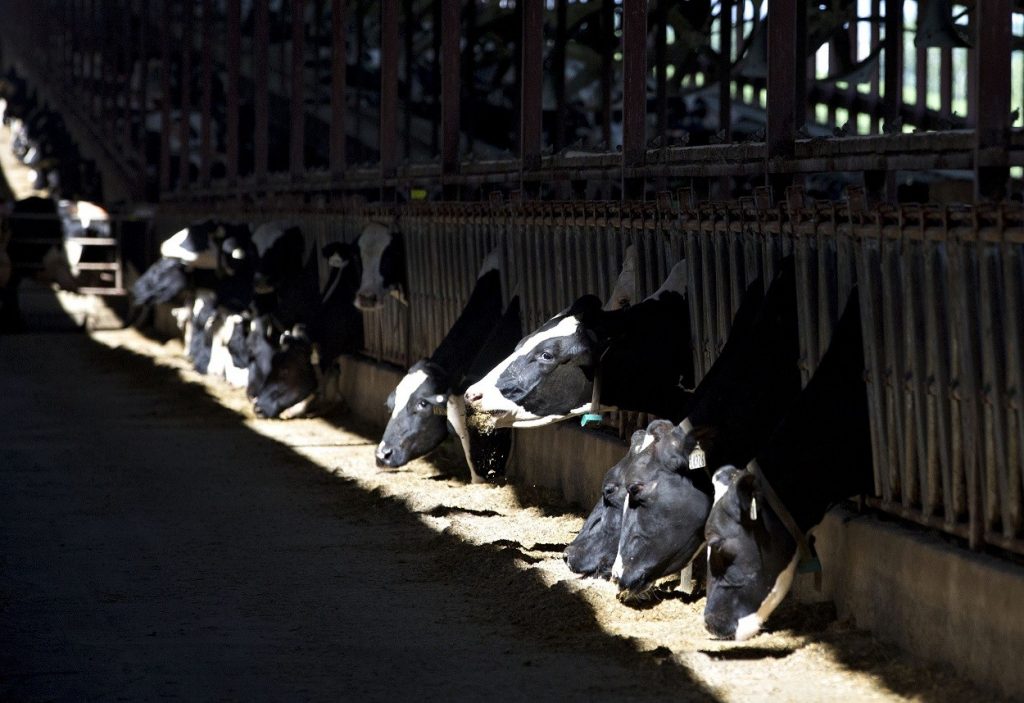While milk and dairy product prices have been volatile since the mid-1990s, “Volatility (has) set a record in 2020,” said Robert Cropp, professor emeritus with University of Wisconsin-Extension and UW-Madison.
Cropp said that in January, forecasts called for 2020 to be a recovery year with the best milk prices in five years. The Wisconsin all-milk average price for January was $19.40 per hundredweight, compared with $16.20 in January 2019.
But soon afterward, the COVID-19 virus outbreak caused a drop in milk and dairy product prices due to schools and universities closing, restaurants being shut down, and cancellation of conferences and sporting events.
“These closings resulted in a big loss in milk sales,” Cropp said. “About 50 percent of butter and cheese is sold through restaurants and food service.”
By June, milk prices and demand for milk and dairy products improved, with restaurants partially opening, with consumers significantly increasing store purchases of milk and dairy products, the federal government purchasing a lot of dairy products, and an increase in U.S. dairy product exports. Also, Cropp said, “Dairy cooperatives applied base excess plans to their dairy farmers to reduce milk production and dairy farmers did. This was an important factor for better prices.”
But milk prices have dropped since July because a surge in COVID-19 cases resulted in restaurants being instructed to cut back on their openings, and because it appeared that food service would be negatively impacted as many schools and colleges open this fall with virtual learning, high school and college fall sports being canceled, professional sports having no fans in the stands, and conferences and other major events being canceled, Cropp said.
“Also, it appears that dairy farmers responded to the higher milk prices in June and July,” Cropp added. “U.S. milk cow numbers were declining from April to June (down 35,000 head), but increased by 2,000 head in July. July milk production was 1.5 percent higher than a year ago.”
The lowest Wisconsin all-milk average price for a particular month this year was $13.60 per hundredweight in May, Cropp said. “The highest this year is $22.30 in July (compared to $18.80 in July 2019) and that will be the highest this year,” he said.
“Milk prices improved considerably in June and July and will be fairly good in August,” Cropp said.
“As of now it seems reasonable that the all-milk price for the remainder of the year will be in the $17.50 to $18.50 range with September being the lowest near $17.50,” he said.
But Cropp added, “There is so much uncertainty as to where milk prices are headed, that it is very difficult to forecast. We don’t know how COVID-19 will continue to impact schools reopening, whether restaurants will be allowed to open further, whether we will have the normal increase in butter and cheese purchases during the upcoming holidays, whether the government will extend further the purchases of dairy products, whether dairy exports will continue above year-ago levels, or whether dairy farmers will continue to increase milk production or hold the line.”
It’s been a “very difficult year” for dairy producers as they experienced very low milk prices in March, April and May after experiencing very low milk prices for 4 ½ years, from 2015 through the first three quarters of 2019, Cropp said. The outlook for the all-milk price for the remainder of the year is better than earlier thought, “but not great,” Cropp said.
“Some profit will be made this year, but it will not be great and will vary amongst dairy farmers,” Cropp said. Some farmers will fare better than others if they participated in various milk price risk management programs that help protect them against low milk prices, he said. Dairy farmers received some direct federal government payments because of low milk prices, he added.
While milk prices improved considerably in June and July and would be fairly good in August, Cropp said, many dairy farmers didn’t see the full increase in their milk check.
With the loss in milk sales in April and May due to COVID-19, there was more milk than the market could handle, Cropp explained. “Some farmers were asked to dump milk or their milk buyer had to sell milk at very depressed prices,” he said. “The cost of doing this was partially taken out of the June and July milk checks. In addition, there were large negative Producer Price Differentials in June and July,” which also had a negative effect on the price the dairy farmer received.
The all-milk price is a gross milk price, not the price that the dairy farmer actually receives, Cropp said. “Out of the all-milk price is deducted the 15 cents-per-hundredweight dairy promotion, hauling costs, plant service costs and possibly other costs,” he said.













